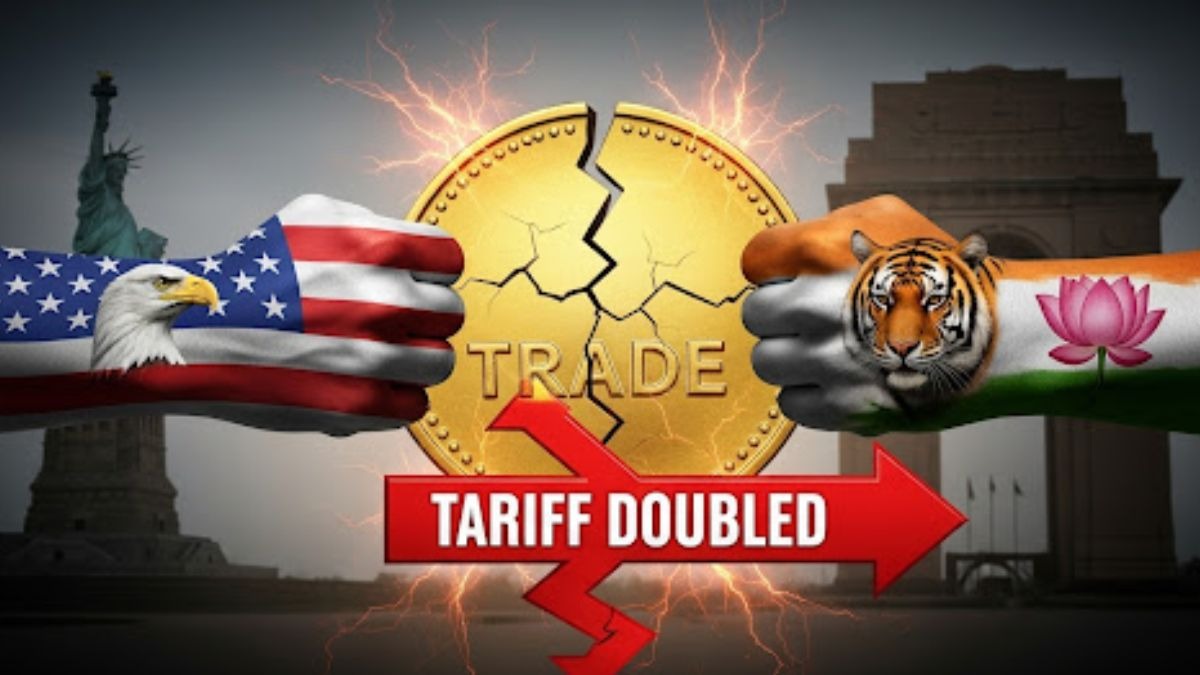The United States has imposed an additional 25% tariff on Indian exports, effective August 27, 2025, doubling the existing tariff rate to a steep 50%. This move is a direct response to India’s growing purchases of Russian crude oil, which the Trump administration has cited as a national security concern. The latest tariff hike challenges India’s exporters by significantly raising the cost of Indian goods entering the US market, a key destination for nearly $85 billion worth of merchandise annually.
Key Highlights Of The New US Tariff Regime
-
Additional 25% tariff on Indian imports effective from 12:01 a.m. EDT on August 27, 2025, brought total US duties on India-made goods to 50%.
-
The tariffs apply broadly across sectors including textiles, gems and jewellery, leather goods, machinery, furniture, and marine products.
-
Exemptions exist for certain sectors such as steel, copper, aluminium, pharmaceuticals, electronics, and automobiles like SUVs and sedans.
-
Products shipped before August 27 and meeting specific customs documentation requirements are exempted temporarily.
The US Department of Homeland Security published draft notices outlining tariff enforcement rules.
Officials stated tariffs respond to India’s continued purchase of Russian oil despite Western sanctions on Moscow.
Background And Rationalization
The additional tariffs relate to Executive Order 14329 signed by former US President Donald Trump on August 6, 2025, citing the Russian Federation’s actions as an unusual national security threat. The order specifically targets Indian goods due to India’s persistent procurement of Russian crude at discounted prices, aimed at restricting Moscow’s revenue streams amid ongoing geopolitical tensions.
Indian exporters had faced an initial 25% tariff since August 7, 2025. Despite efforts by Indian officials to reduce the tariff rate through negotiations, the US has proceeded with the planned doubling given stalled talks over a ceasefire in Ukraine and insufficient adherence to sanctions.
Sector-Wise Impact And Exporters’ Concerns
Around 50% of India’s $87 billion in merchandise exports to the US—approximately $43 billion—are potentially affected by the raised tariffs. Sectors like textiles and gems, with significant export volumes to the US, fear adverse impacts on profit margins. Exporters are exploring alternative markets in China, Latin America, and the Middle East.
Certain exceptions for critical sectors like pharmaceuticals and electronics aim to shield these industries from the steep tariffs’ full brunt, reflecting their strategic importance.
Economic And Diplomatic Repercussions
Rupee depreciation against the dollar was observed immediately as the tariffs took effect, reflecting market uncertainty. The expanded tariff regime threatens India-US trade relations at a time when both countries remain strategic partners on several fronts. Indian commerce authorities have pledged to support affected exporters but have yet to announce retaliatory measures.
Prime Minister Narendra Modi reiterated resilience amid tariff pressures, emphasizing the importance of self-reliance and pride in Indian industry and workforce. He stressed that regardless of external constraints, India will strengthen its industrial base and global competitiveness.
US-Russia Energy Talks And Future Trajectory
Interestingly, reports emerged of US-Russia discussions on energy deals just before tariff implementation, including potential re-entry of Exxon Mobil into Russian oil projects. These developments complicate geopolitical dynamics and may influence future trade and sanction policies.
Looking Ahead: Navigating Tough Trade Waters
Indian exporters and policymakers face the urgent task of mitigating tariff impacts through diversification, innovation, and supportive government schemes. Increasing focus on Make in India, enhancing logistics, and exploring new trade routes will be critical. Ongoing dialogue between India and the US is essential to resolve disputes and restore balanced trade relations.
Sources: Times of India, Indian Express, Reuters, Financial Express, ANI, Hindustan Times
